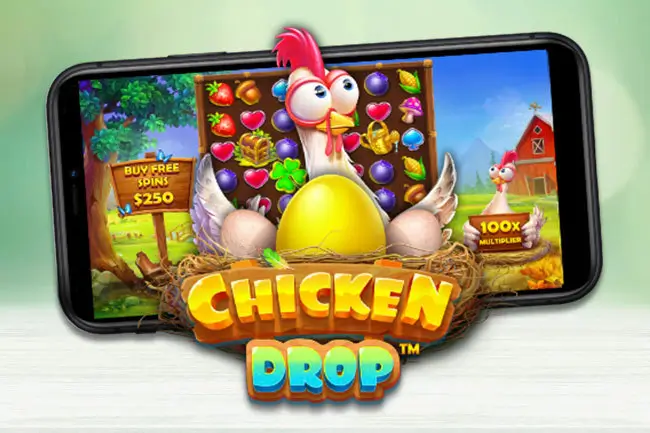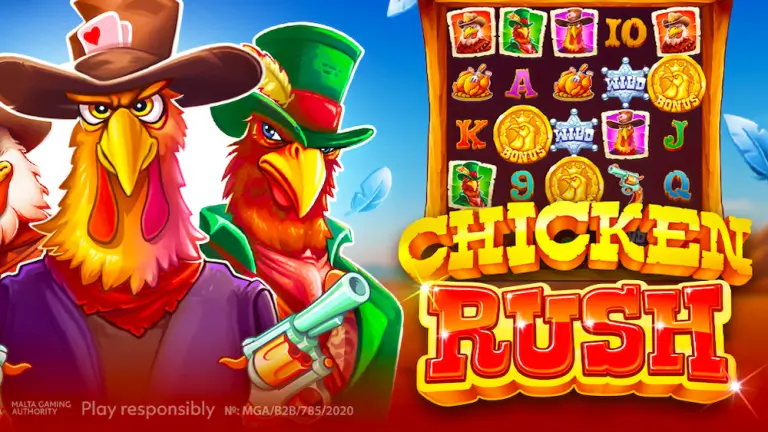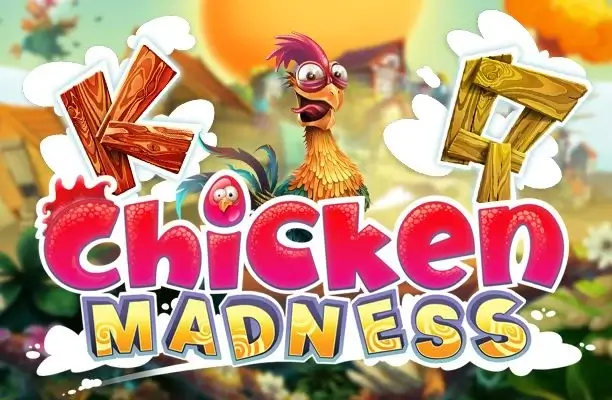The riddle of the chicken, which involves a poultry animal and a road, can be traced back to 1847, yet the precise reason behind the chicken’s inaction remains a topic of debate. Whether it is a commentary on the futility of searching for deeper meaning, a simple jest, or perhaps, as some suggest, the chicken failed to cross due to fear of the traffic, this simple joke has persisted through generations. The enduring nature of this riddle highlights the importance of humor.
Okay, let’s be honest. We’ve all heard it. Ad nauseam. The ‘Why did the chicken cross the road?’ joke is practically woven into the fabric of our collective consciousness. It’s the comedic equivalent of elevator music – ubiquitous, often dismissed, but undeniably there.
But what if I told you there’s more to this feathered enigma than meets the eye? That beneath its seemingly simple surface lies a surprisingly complex network of interpretations, philosophical ponderings, and even a touch of existential dread? (Okay, maybe just a touch).
That’s precisely what we’re here to do. Forget the knee-jerk reaction of groaning and rolling your eyes. We’re diving deep – beak first – into the surprisingly intricate world of this classic joke. We’re going to unpack it, dissect it, and maybe even figure out why it’s stuck around for so long.
The thesis? The joke’s enduring popularity isn’t accidental. It’s fueled by its inherent ambiguity, its ability to be viewed through multiple lenses – humor, motivation, language, and, crucially, audience perception. So, buckle up, buttercup! It’s time to explore the poultry-powered paradox that is the chicken and the road.
The Players: Chicken and Road – More Than Meets the Eye
Let’s be honest, a joke needs its stars, right? In our little comedic play, we’ve got two main characters strutting (or pecking) onto the stage: the chicken and the road. But hold your horses (or should I say, hold your chickens?)! There’s more to these two than meets the eye.
The Chicken: Protagonist or Punchline?
Is the chicken just a feathered friend headed for the other side, or is it something more? Is the chicken the protagonist of our absurd story? Does it have some deep, dark reason to cross the road? Or is it just the punchline, a blank canvas for our comedic projections?
Think about it. Why do we even expect the chicken to cross in the first place? We’re loaded with assumptions – maybe it’s hungry, maybe it’s on a date, or maybe it’s just trying to escape a really bad karaoke night at the barn. We automatically give the chicken a purpose and a goal. We, as the audience, bring our own story to the joke.
The Road: Obstacle, Opportunity, or Just a Road?
Now, let’s talk asphalt. At first glance, the road seems simple enough. But is it really? It’s not just a physical obstacle, it’s a symbol. The road is that thing standing between you and your goal.
The road can be a path to something new, a journey of discovery, or even a daunting challenge. Is it a barrier keeping the chicken from its dreams? Or does it represent something more profound – like the struggles we face in our own lives? Maybe the chicken is just trying to find itself on the open road?
Cracking the Joke: Structure, Setup, and Subversion
Let’s get down to the nitty-gritty of why this joke either lands with a feathery thud or soars with comedic brilliance. It all boils down to how the joke is built—its structure, its setup, and, most importantly, how it messes with our expectations. Because isn’t that what good humor does? It catches us off guard!
The Anatomy of a Joke: Setup and Punchline
Every joke, even our beloved chicken-related one, has a setup and a punchline.
- The setup in this case is simple: “Why did the chicken cross the road?” It’s a question that begs for an answer, implying there’s some intriguing motive behind the chicken’s actions. It primes us for something clever, something insightful. We’re ready, pencils sharpened, waiting for the comedic genius to strike!
- Then comes the punchline, the moment of truth: “To get to the other side.” Now, this is where things get interesting. This punchline can either fulfill our expectations in the most underwhelming way possible (hence the “non-joke” status) or subvert them completely, leading to genuine laughter. The power of this joke is based on how the punchline is delivered, and of course the audience.
The magic is in that subversion. Did the punchline surprise you? Did it make you think of something absurd or unexpected? Or did it leave you cold, wondering if that was really the best the joke could offer?
Beyond the Obvious: Exploring the “Why?”
Ah, “To get to the other side”… It’s the classic response, the one we’ve all heard a million times. But let’s be honest: it’s rarely satisfying. It’s the comedic equivalent of a shrug. Why? Because it’s too literal, too obvious. It doesn’t offer any real humor or insight. It’s like saying the sky is blue – technically correct, but hardly groundbreaking.
This is where we can get creative. The real fun begins when we start brainstorming alternative reasons for the chicken’s road-crossing adventure. Let’s toss out some ideas:
- Fear: Maybe the chicken was running from a ruthless farmer with a hankering for fried chicken?
- Boredom: Perhaps the chicken was tired of the same old scenery and needed a change of pace?
- Philosophical Reasons: What if the chicken was on a quest for enlightenment, searching for the true meaning of “the other side?”
- Love: The chicken has a secret admirer that lives on the other side of the road.
- Rebellion: Maybe the chicken was making a political statement to the unfair laws and system on it’s side of the road!
The possibilities are endless! The key is to come up with answers that are unexpected, absurd, and, most importantly, funny. The more creative you get, the more likely you are to transform this tired old joke into something fresh and hilarious.
The Un-Crossing: Delving into Inaction
Okay, so we’ve spent all this time thinking about why the chicken would bravely (or foolishly) venture across the asphalt jungle. But what if…it didn’t? What if our feathered friend just decided, “Nah, I’m good here”? Let’s flip the script and explore the fascinating realm of chicken inaction!
Decision Time: Weighing the Options
Imagine our chicken, standing at the edge of the road, contemplating its existence. Forget the burning desire to reach the other side; what’s holding it back? Maybe it’s the sheer terror of oncoming traffic! Picture a massive truck barreling down the road – any sane chicken would think twice. Or perhaps it’s the supreme comfort of its current surroundings. A cozy patch of grass, a juicy worm just waiting to be devoured – why risk it all for the unknown? Could it be simple lack of motivation? Maybe the chicken’s just having an existential crisis, pondering the meaning of life instead of engaging in pointless road crossings.
Is there any real logic to this feathered refusal? Maybe! Chickens aren’t exactly known for their complex reasoning skills, but who are we to judge? Perhaps it’s a primal instinct kicking in, a self-preservation mechanism honed over generations of almost-roadkill experiences. Or maybe, just maybe, it’s pure, unadulterated irrationality. A chicken being a chicken, making choices that defy all human understanding!
Risks and Rewards: What’s at Stake?
Let’s break down the stakes. On one claw, we have the potential risks of crossing: Becoming a feathery pancake is a big one! Injury, trauma, a ruined day – none of those sound appealing. But what about the rewards? More food? Maybe a hot date with a fine-looking rooster (or hen, to each their own!). Perhaps the other side holds fame, fortune, and a starring role in a KFC commercial (okay, maybe not that last one).
Then there’s the effort. Crossing a road isn’t exactly a walk in the park (or a waddle in the pasture). It requires physical exertion (those little legs have to work!), mental focus (gotta watch out for those cars!), and a strategic plan (wait for a gap in traffic!). Is it worth the hassle? Our chicken might just decide that the potential benefits don’t outweigh the costs. The great debate of the chicken.
Words Matter: Language, Puns, and the Power of Interpretation
Ah, language! It’s not just about what we say, but *how we say it*, isn’t it?* And when it comes to a joke as simple as why the chicken crossed the road, the words we use are surprisingly crucial to whether it lands with a chuckle or a thud. Let’s unpack this linguistic poultry party, shall we?
The Weight of Words: Diction and Delivery
Ever thought about how different the joke feels if we ask, “Why did the chicken *traverse the road?” Sounds a bit stuffy, right? The simple word “cross*” does the trick because it’s direct, universally understood, and doesn’t try to be too clever. Using “go to” might be even worse – stripping it of its already minimal humor! The diction here is key.
And then there’s the delivery. Imagine someone droning the joke in a monotone voice. Zzzzzz. But a well-timed pause before the punchline? Maybe a little eyebrow raise? Suddenly, we’re in comedy territory. The tone, rhythm, and timing are all ingredients in the perfect joke-telling recipe.
Pun-tastic Possibilities: Exploring Wordplay
Okay, this is where things get egg-cellent! (Sorry, I had to.) The beauty of this joke is how ripe it is for puns. Think about the phrase “the other side.” It can literally mean the opposite side of the road, but it could also mean…the afterlife. Cue the existential chicken joke.
Here are a couple of punny variations to get your comedic gears turning:
- Why did the chicken cross the playground? To get to the other slide!
- Why did the chicken cross the Möbius strip? To get to the same side!
The key is to find those unexpected twists on familiar words and concepts. And remember, a good pun is its own re-word.
Who’s Laughing? The Audience’s Role in Understanding
Ever told a joke that landed with a resounding thud? It happens to the best of us! The thing about humor is, it’s wildly subjective. What tickles one person’s funny bone might leave another scratching their head in confusion. Our backgrounds, our cultures, our own wacky experiences – they all play a huge role in how we interpret and appreciate a joke, even a seemingly simple one like our friend the chicken and its roadside adventure.
Culture Clucks: Context and Comprehension
Think about it: humor is often deeply rooted in culture. A joke that’s hilarious in one country might be totally lost in translation in another. Maybe there’s a specific cultural reference, a shared experience, or even just a different style of comedy that influences how the joke is received. For example, British humor often relies on sarcasm and irony, while American humor might lean towards slapstick or observational comedy. So, when we trot out our chicken joke, it’s worth considering whether cultural nuances might be affecting the punchline. Is there a specific element of the joke that resonates differently depending on where you’re from or what your background is? It is vital that we understand the cultural reference.
Personal Perspectives: Why We Laugh (or Don’t)
But it’s not just about culture; it’s about you. Your individual experiences, your own personal history – they all shape your sense of humor. Maybe you had a pet chicken growing up, or maybe you had a near-miss with a car while crossing the road. These kinds of experiences can definitely influence how you perceive the chicken joke. Does it feel relatable? Does it tap into a shared human experience? Or does it just fall flat because it doesn’t resonate with your personal sense of humor? Sometimes, the funniest jokes are the ones that hit close to home, while other times, the most absurd and nonsensical jokes can be just as hilarious.
What immediate environmental factors might deter a chicken from crossing a road?
The environment presents immediate dangers. Predators represent a significant threat. Hawks observe the road from above. Foxes may lurk near the roadside. Vehicles pose a direct risk. Cars move quickly on the road. Trucks create loud noises. Weather introduces unfavorable conditions. Rain makes the road slippery. Wind could disorient the chicken.
How does a chicken’s cognitive ability influence its decision-making process regarding crossing a road?
Cognitive ability affects decision-making. Chickens possess limited reasoning skills. Instinct drives most actions. Fear overrides rational thought. Past experiences shape behavior. A previous close call may cause hesitation. Learning occurs through association. The chicken associates the road with danger. Memory influences the chicken’s choices. The chicken remembers a threat.
In what ways do social dynamics within a flock affect an individual chicken’s likelihood of crossing a road?
Social dynamics influence individual behavior. Flock behavior dictates the chicken’s actions. A dominant hen leads the way. Subordinate chickens follow the leader. Social pressure affects the chicken. Peer influence impacts the decision. Safety in numbers motivates group movement. The flock crosses together. Individual initiative gets suppressed. The chicken relies on the group’s decision.
What role do physical obstacles play in preventing a chicken from crossing a road?
Physical obstacles impede the chicken’s path. Fences block the road’s edge. Vegetation creates a barrier. Bushes obscure the view. Curbs present a challenge. The chicken struggles to jump. Debris litters the road. Trash obstructs the way. Potholes create uneven surfaces. The chicken avoids the holes. Construction disrupts the environment. Barriers prevent crossing.
So, next time you’re pondering that age-old chicken conundrum, remember it’s not just about getting to the other side. Maybe the chicken was just enjoying the view, or perhaps it had a more pressing engagement we know nothing about. The possibilities are endless, really!


